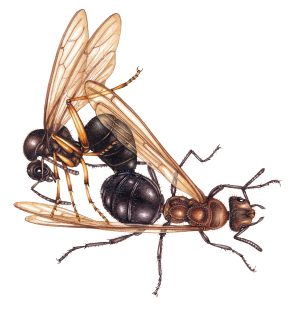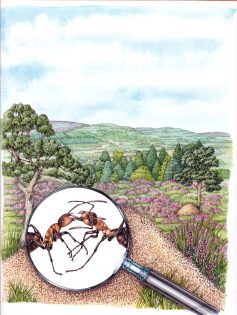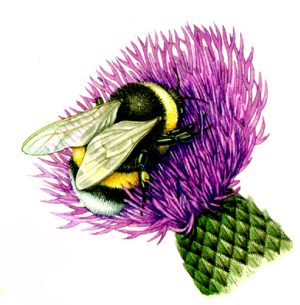
Nest and budded smaller nest of wood ant
Nest and budded smaller nest of wood ant. This budding often happens with wood ant species.

Mating Formica rufa Southern Red wood ant queen and male
Mating during nuptial flight Formica rufa Southern Red wood ant queen and male

Narrow headed ant Formica exsecta
Worker caste of the Narrow headed ant Formica exsecta. This species have curved backs to their heads.

Slender ant Leptothorax acervorum
Slender ant Leptothorax acervorum worker. This ant is only 3mm, and although similar to the Shining Guest ant, has a darker and less smooth head.

Scottish wood ant Formica aquilonia
Scottish wood ant Formica aquilonia worker. These ants are only modestly hairy.

Southern Red wood ant Formica rufa
Southern Red wood ant Formica rufa. One of the most common species of European wood ant.

Shining Guest ant Formicoxenus nitidulus
Shining Guest ant Formicoxenus nitidulus worker. This tiny species is extremely shiny, and only 2.75mm long.

Thorax and hairs detail of Southern red wood ant Formica fusca
Thorax and hairs detail of Southern red wood ant Formica fusca. This species has few, short hairs. There are no hairs on the head of the Southern red wood ant.

Thorax and hairs detail of Hairy wood ant Formica lugubris
Thorax and hairs detail of Hairy wood ant Formica lugubris. Hairs are longer and more numerous than other wood ant species, and extend beyond the eyes.

Social parasitism Queen and worker ants
Social parasitism in ants. The queen of the Slave maker ant, Formica sanguinea, being tended to by workers of Dusky ant Formica fusca.

Wood ants guide cover image
Wood ants guide cover image Cairngorms national park and Southern red wood ants Formica fusca practising trophallaxis

Colour roughs for different wood ant species
Colour roughs for: Southern red wood ant Formica rufa, Hairy wood ant Formica lugubris, Scottish wood ant Formica aquilonia, and Slender ant Leptothorax acervorum. Used to check colours before proceeding to final illustrations.

Ant species colour guide rough
Ant species colour guide rough for: Southern red wood ant Formica rufa, Hairy wood ant Formica lugubris, Scottish wood ant Formica aquilonia, Slender ant Leptothorax acervorum, Slave-making Blood red ant Formica sanguinea, Shining guest ant Formicoxenus nitidulus, and Narrow headed ant Formica exsecta. These sketches were used to check the colouration before moving onto the […]

Male wood ant Formica lugubis Hairy wood ant
Male wood ant F. lugubris Hairy wood ant. These males have dark bodies and yellow legs and genitals. Like the females, they have wings. Unlike the females, shortly after mating during the nuptial flight, they will die.

Queen ant Formica aquilonia Scottish wood ant
Queen ant F. aquilonia Scottish wood ant with wings. Newly emerged queens have wings, and following their mating and nuptial flight, they bite these off. This enables them to burrow underground and set up a new ant nest and colony, and to begin laying eggs and raising young.

Pupae and cocoon of wood ant and unsheathed pupae
Pupae of a wood ant, both within its cocoon, and extracted. Detail from a life cycle ant illustration by Lizzie Harper natural history and sciart illustrator

Larvae of wood ant
Larvae of wood ant showing their translucent bodies and segmentation.

Eggs of wood ant
Illustration of several eggs of a wood ant.

Scottish wood ant thoracic view
Detail of the thorax of the Scottish wood ant Formica aquilonia. The illustration shows distribution of hairs up to the eyes. This species is often confused with the Hairy wood ant which has longer hairs.

Driver ant Dorylinae
Driver ant Dorylinae in balck and white, side view

Sabre wasp Rhyssa persuasoria 2
Sabre wasp Rhyssa persuasoria using her long ovipositor to lay an egg with her long terminal cerci pointing upwards

Red ant Mymrica Rubra
Red ant Mymrica Rubra swift ink sketch with red wash and stippling

Common wasp Vespa vulgaris on pear
Common wasp Vespa vulgaris feeding on a ripe pear; sketch in colour

White tailed bumblebee Bombus lucorum on a thistle head
White tailed bumble bee Bombus lucorum nestled in the florets of a thislte head

















































